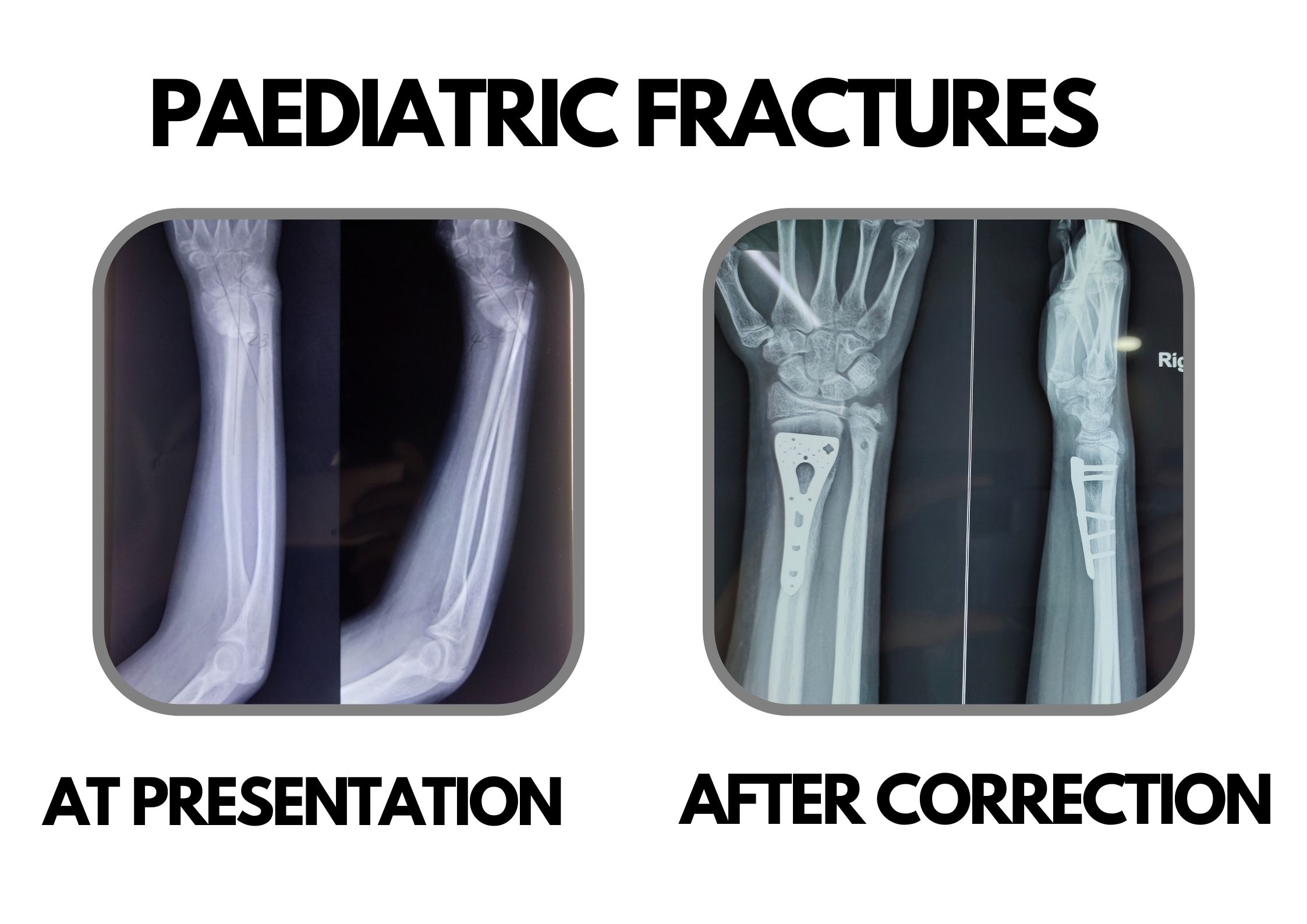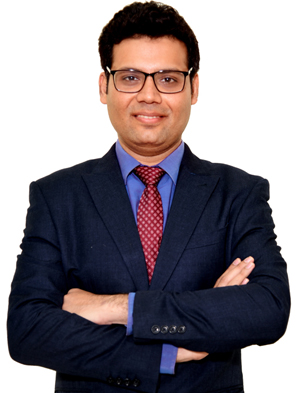8 Years Experience
MBBS, MS (Orthopaedics) FIPO (Mumbai)Consultant Paediatric Orthopaedic & Limb reconstruction surgeon.

A child bone fracture is a medical condition in which a bone of a child (a person younger than the age of 18) is cracked or broken. About 15% of all injuries in children are fracture injuries. Bone fractures in children are different from adult bone fractures because a child's bones are still growing. Also, more consideration needs to be taken when a child fractures a bone since it will affect the child in his or her growth.
On an everyday basis bones will support many kinds of forces naturally applied to them, but when the forces are too strong the bones will break. For example, when an adolescent jumps off of a trampoline and lands on his/her feet the bones and connective tissue in the adolescent's feet will usually absorb the force, flex, then return to their original shape. However, if the adolescent lands and the force is too strong, the bones and the connective tissue will not be able to support the force and will fracture
Types of fractures:
The bones of a child are more likely to bend than to break completely because they are softer and the periosteum is stronger and thicker. The fractures that are most common in children are the incomplete fractures:
Symptoms and signs
Even though symptoms vary widely after experiencing a bone fracture, the most common fracture symptoms include:
PAIN in the fractured area
SWELLING in the fractured area
obvious DEFORMITY in the fractured area
not being able to use or MOVE the fractured area in a normal manner
BRUISING, warmth, or redness in the fractured area
When a child experiences a fracture, he or she will have pain and will not be able to easily move the fractured area . a doctor or emergency care should be contacted immediately. In some cases even though the child will not have pain and will still be able to move, medical help must be sought out immediately. To decrease the pain, bleeding, and movement a physician will put a splint on the fractured area. Treatment for a fracture follows a simple rule: the bones have to be aligned correctly and prevented from moving out of place until the bones are healed. The specific treatment applied depends on how severe the fracture is, if it's an open or closed fracture, and the specific bone involved in the fracture (a hip fracture is treated differently from a forearm fracture for example) Different treatments for different fractures .
The general treatments for common fractures are as follows:
Because most fractures heal successfully after having been repositioned, a simple plaster or fiberglass cast is commonly used.
A cast, or brace, that allows limited movement of the nearby joints is acceptable for some fractures.
This treatment consists of aligning a bone or bones by a gentle, steady pulling action. The pulling may be transmitted to the bone or bones by a metal pin through a bone or by skin tapes. This is a preliminary treatment used in preparation for other secondary treatments.
This treatment is only used when an orthopedic surgeon assigns it to restore the fractured bone to its original function. This method positions the bones to their exact location, but there is a risk for infection and other complications. The procedure involves the orthopedist performing surgery on the bone to align the bone fragments, followed by the placement of special screws or metal plates to the outer surface of the bone. The fragments can also be held together by running metal rods through the marrow in the center of the bone.
This treatment also requires surgery by an orthopedist. Pins or screws are placed into the fractured bone above and below the fracture site. The orthopedic surgeon repositions the bone fragments and pins or screws are connected to a metal bar or bars outside the skin which holds the bones in their proper position so they can heal. The external fixation device is removed after an appropriate time period.
Fractures in children generally heal relatively fast, but may take several weeks to heal. Most growth plate fractures heal without any lasting effects. Rarely, bridging bone may form across growth plates, causing stunted growth and/or curving. In such cases, the bridging bone may need to be surgically removed. A growth plate fracture may also stimulate growth, causing a longer bone than the corresponding bone on the other side. Therefore, the American Academy of Orthopaedic Surgeons recommends regular follow-up for at least a year after growth plate fractures.

Consultant Paediatric Orthopaedic & Limb reconstruction surgeon.
© Copyright 2020. All Rights Reserved | Powered by Dr Deepak khurana- Paediatric Orthopaedic Surgeon Crafted by CWM Technologies